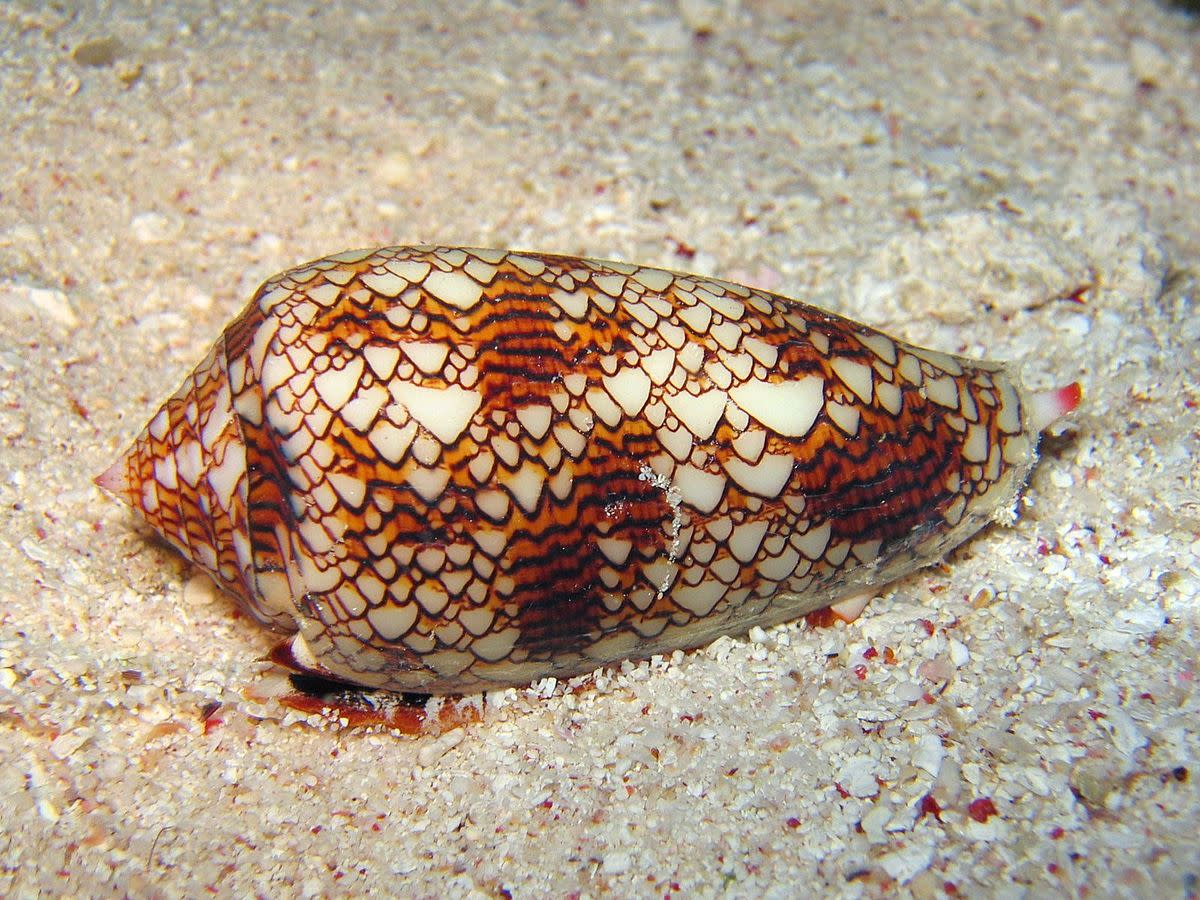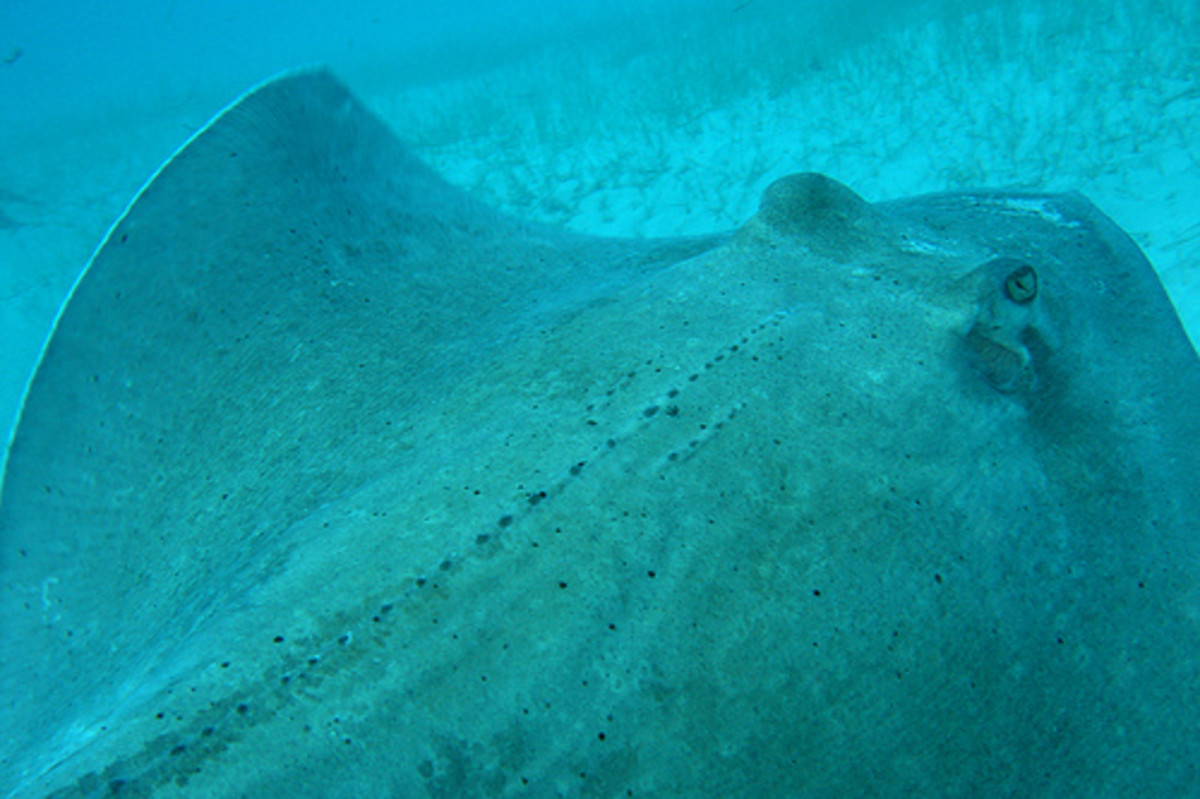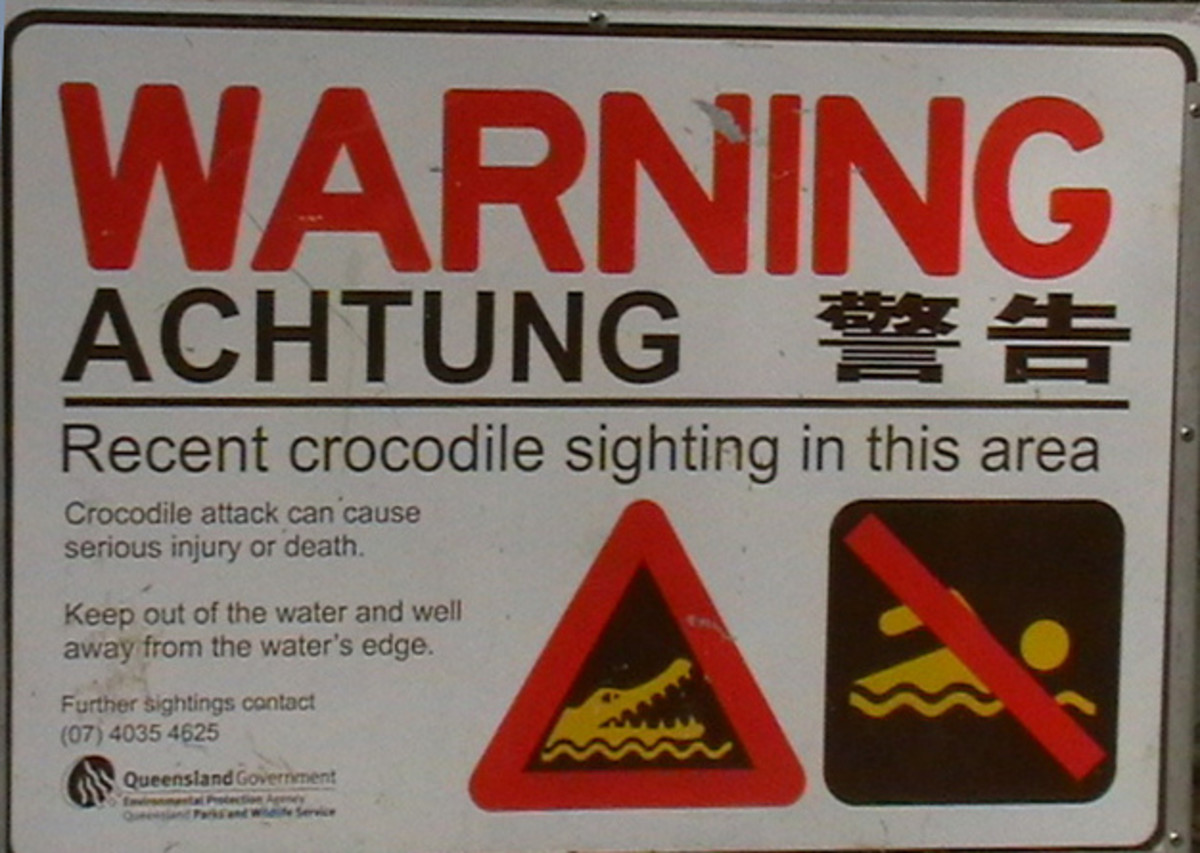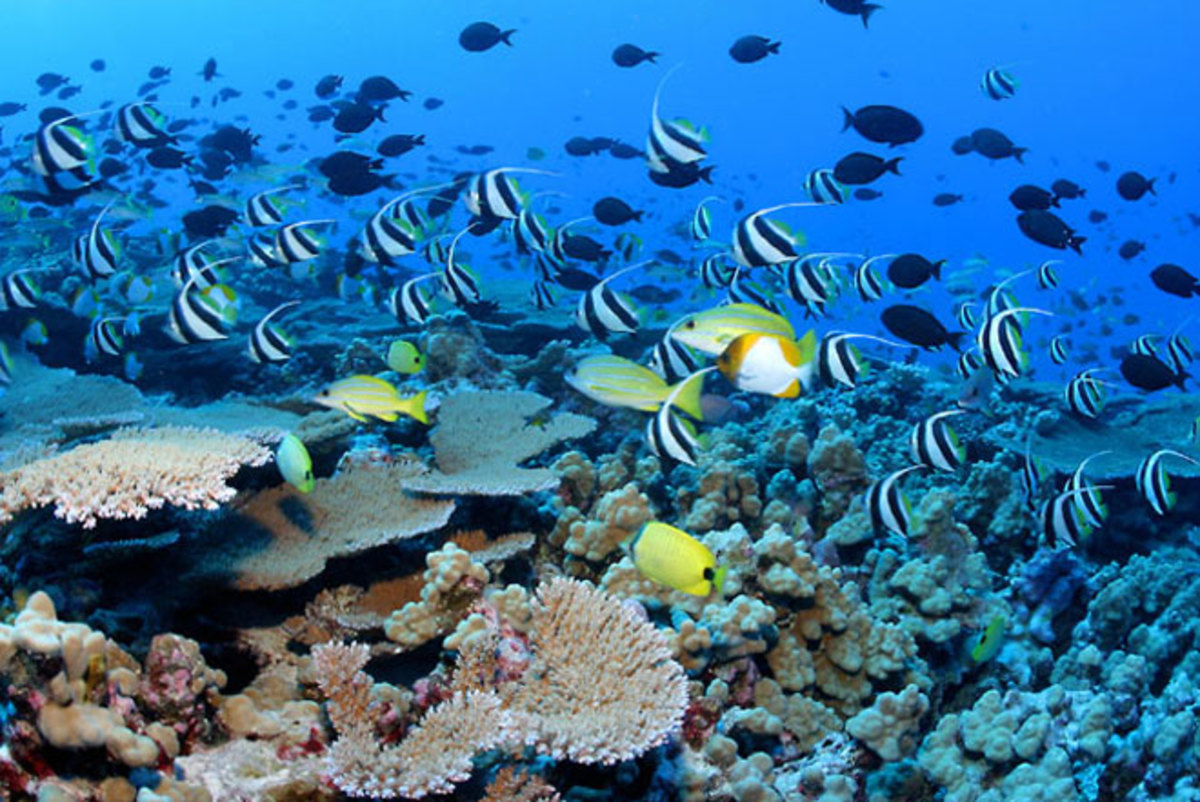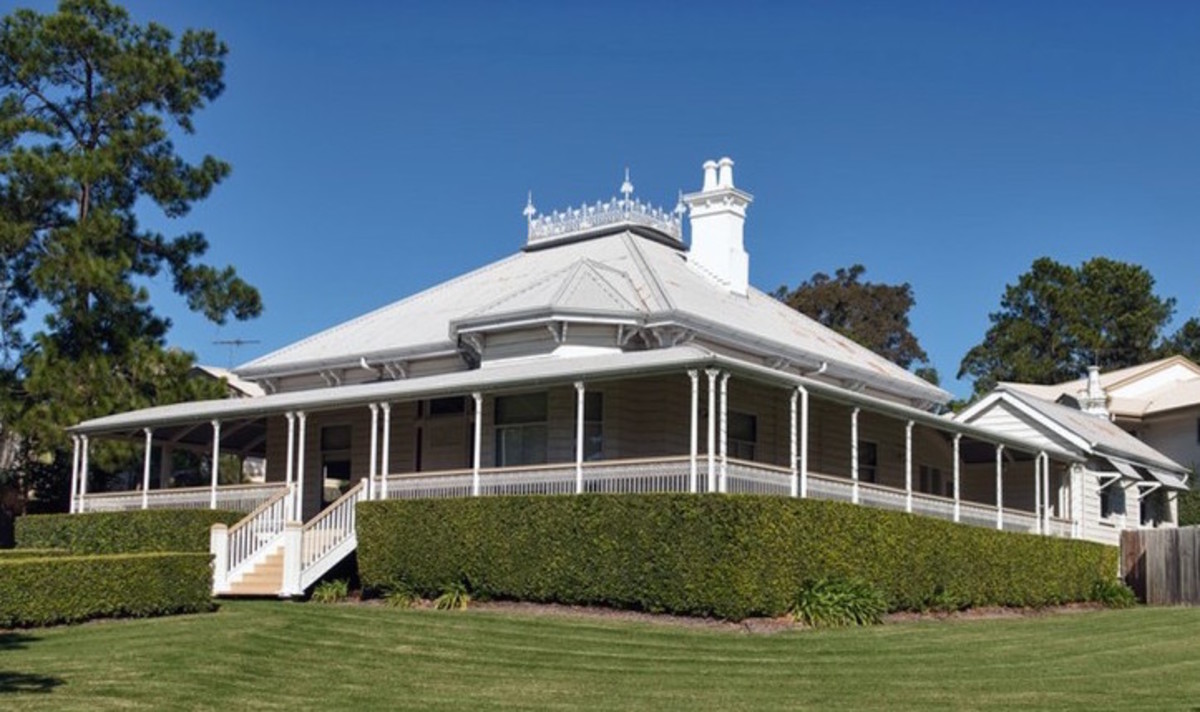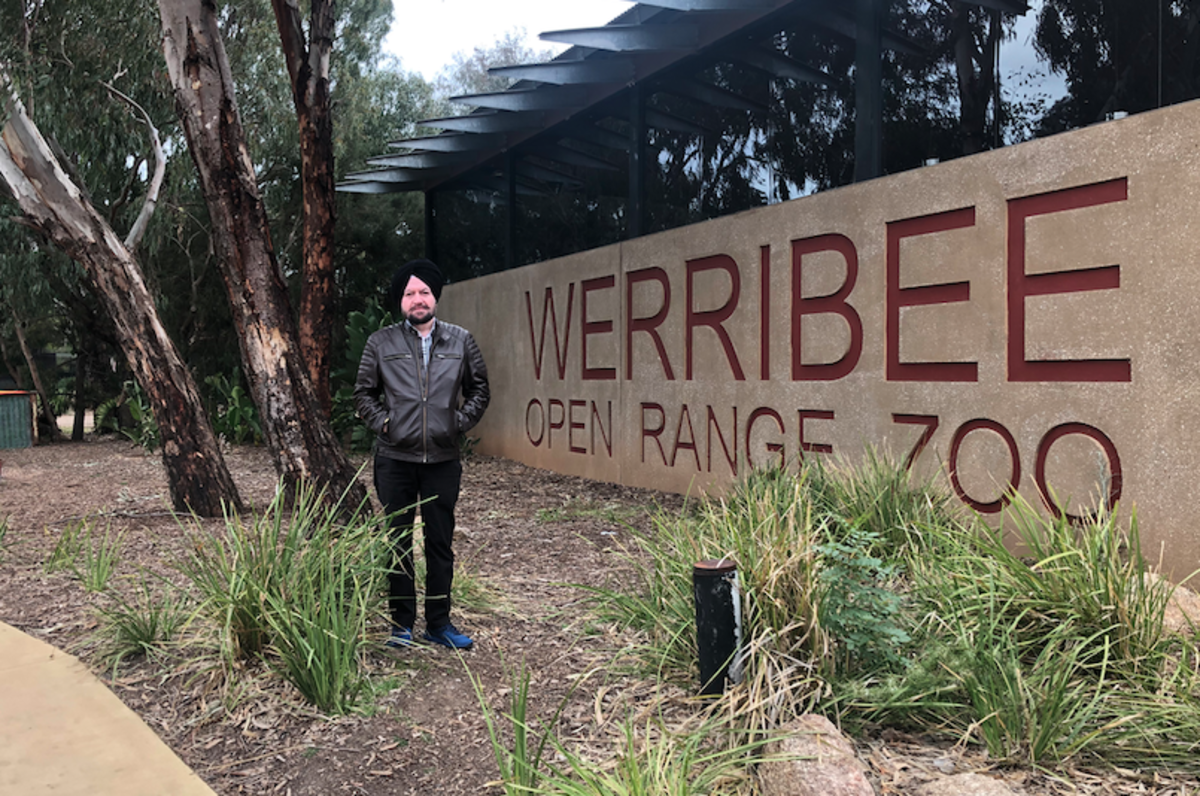Australia and the Great Barrier Reef
Amazing Assortment of Marine Life
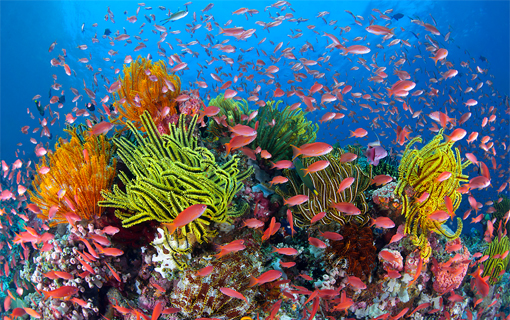
Marine Life
At low tide the Great Barrier Reef can be seen as an intricate complex of terraces, pools, caverns and crevices. It harbors an amazing assortment of marine life, from the dazzling little fire-fish, to the immovable giant clam, more than four feet across, human-waist-high and weighing a quarter of a ton.
Giant Clam
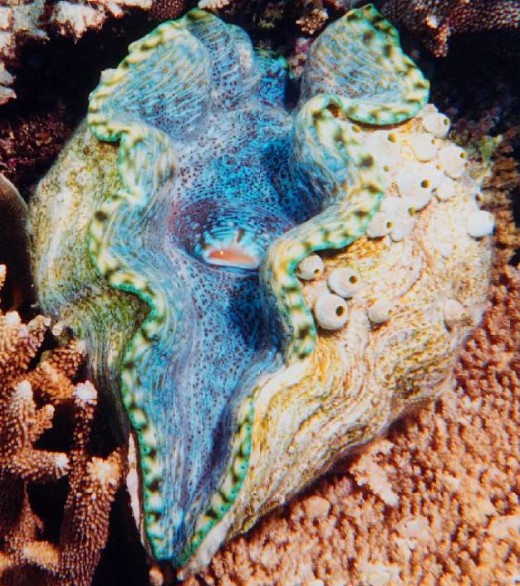
Beautiful Coral Gardens
From above the Reef’s lagoon is breathtaking. A beautiful surface of color, peacock blues shot with turquoise, lovely purples mixed with gold, violet and jade.
Scattered like emeralds, hundreds of fairy tale islands appear, from one end of the lagoon to the other. The islands are trimmed with golden beaches and gleaming with green jungle vegetation.
As the tide ebbs away, underwater coral gardens appear at the edge of the sea. The emerging reef is safe to cross for awhile.
The water is so clear that you can see each little pebble, beautiful coral gardens seems to be within reach, however it is actually 50 feet down.
Beautiful Underwater Coral Gardens
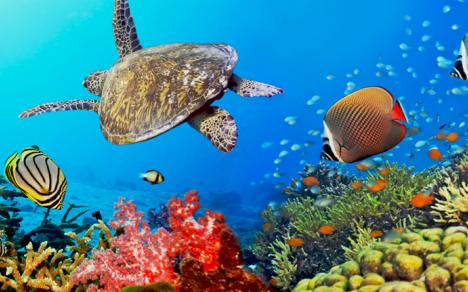
Sharks
The tide can sneak up and cut off retreat in a matter of minutes so visitors are advised to do sightseeing with someone that is familiar with the reef. If you get cut off and attempt to swim back you could encounter killer tiger and hammerhead sharks, barracuda, devil rays and sea snakes.
Hammerhead Shark
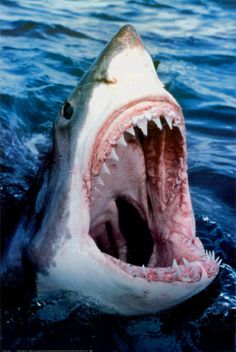
Stonefish
The most feared Reef waders are the foot long stonefish. They are so camouflaged with scabs, warts, slime and bristles that they are almost invisible when lying on the bottom of a pool. Down the back of the stonefish a line runs with 13 razor-sharp spines, each embedded in twin poison sacs. Unwary victims who have trodden on a stonefish have seldom recovered from even a prick.
A Prick of a Stonefish Can Kill You
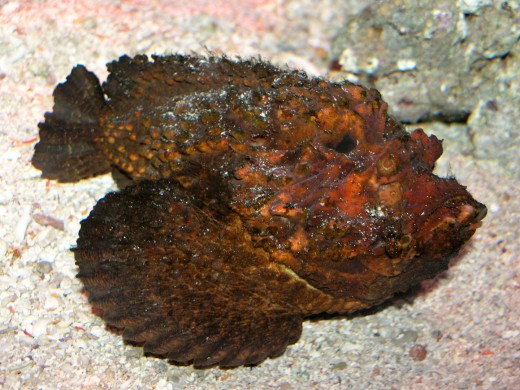
Fascinating Fish
- The fish swimming in the pools are fascinating.
- Their dazzling colors are patterned with tiger stripes, spots, spirals and checks. They come in different shapes, wafer-thin, triangular and rectangular.
- Others are copies of dragonflies. There are orange-red goat-fish, harrowing in the sand with pronged beards, a walking fish, which spends most of its time out of the water, one eye on the sky, the other revolving.
Beautiful Colour of This Crab
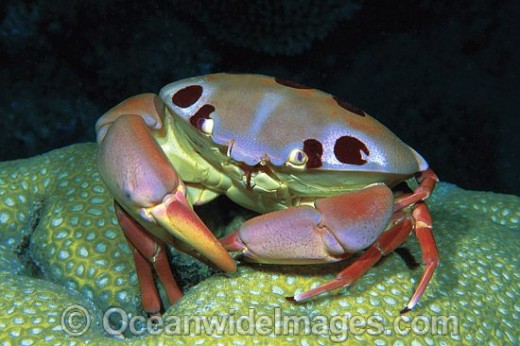
Crabs Come In Wonderful Colors
- Crabs race all over the place, vanishing into their shell-homes. One crab has blazing red eyes and a blue back the size of a soup plate.
- Wonderful shell varieties are found near the Reef, more than anywhere else in the world.
- These include the prized pearl shell (the Barrier Reef supplies a large percent of the world’s mother-of-pearl market.)
- It is hard to detect the originator of this vast realm of beauty, the reef-building polyp, for it is little more than a blob of gelatinous tissue. With only three ‘working parts,’ mouth, tentacles and inside cavity it is full of surprises.
- The all-purpose mouth absorbs food and expels waste. The tentacles conceal secret weapons in the form of numerous coiled whips of stinging cells.
- When edible organisms rush against the tentacles, the whips lash out, paralyzing the victims, which are then drawn into the mouth.
- Inside its cavity the polyp transforms limy secretions extracted from the sea into a skeleton. As successive generations of coral colonies die, their skeletons gradually pile higher and higher. They form the basic material of which the whole gigantic structure is composed, by being cemented with the accumulation of reef debris.
- Polyps only live in depths which can be reached by sunlight. Building areas, therefore, must be shallow, 50 to 70 feet. Below the 180 feet all polyps perish. Yet bores made in the Barrier Reef show that the coral extends thousands of feet below the 180 foot limit.
- A long time ago the shore must have extended to the present Outer Reef, the islands were peaks of a towering coastal range.
- By freak coincidence, the shore sank at the same rate as corals normally grow upward, leaving the lagoon shallow. Geologists believe that this process may have continued for 50 million years. The thought of this amazing stretch of time adds to the wonder and mystery of the Reef.
- When the life-giving tide returns to feed and refresh all that waits upon it, the Great Barrier begins to tune up with a medley of weird sounds. Scrape-scrape comes from the crabs and suck-suck from the thirsty clams. A murmur comes from countless tiny waterfalls.
- Australia's Coral Wonderland 1967/Readers Digest
Such Amazing Colours

This content is accurate and true to the best of the author’s knowledge and is not meant to substitute for formal and individualized advice from a qualified professional.
© 2016 Anita Hasch

